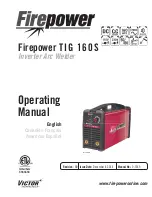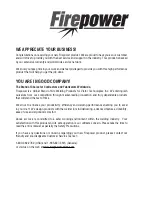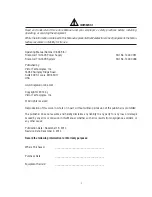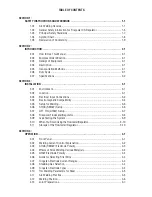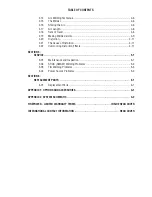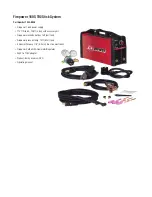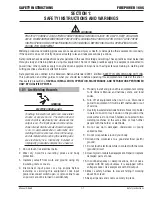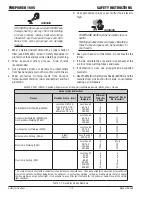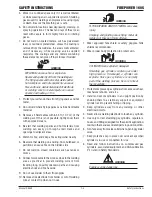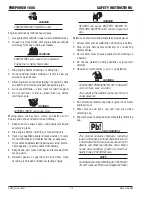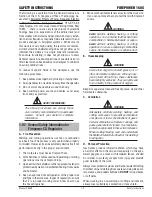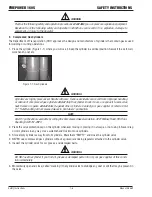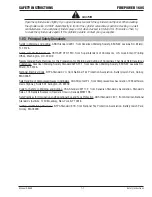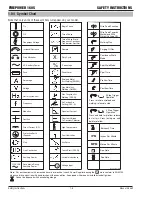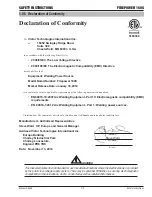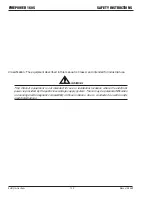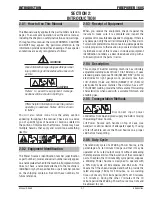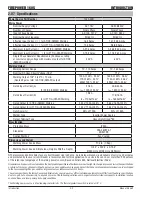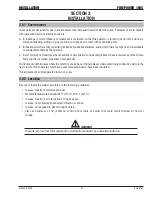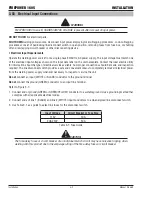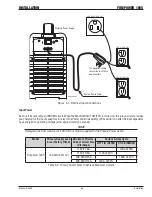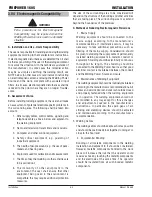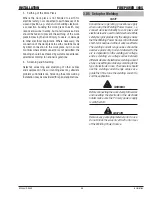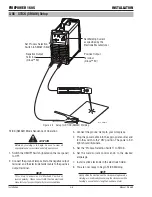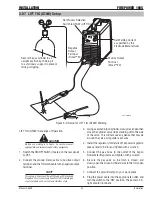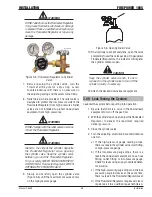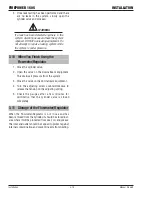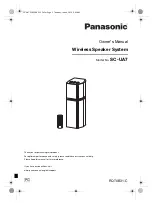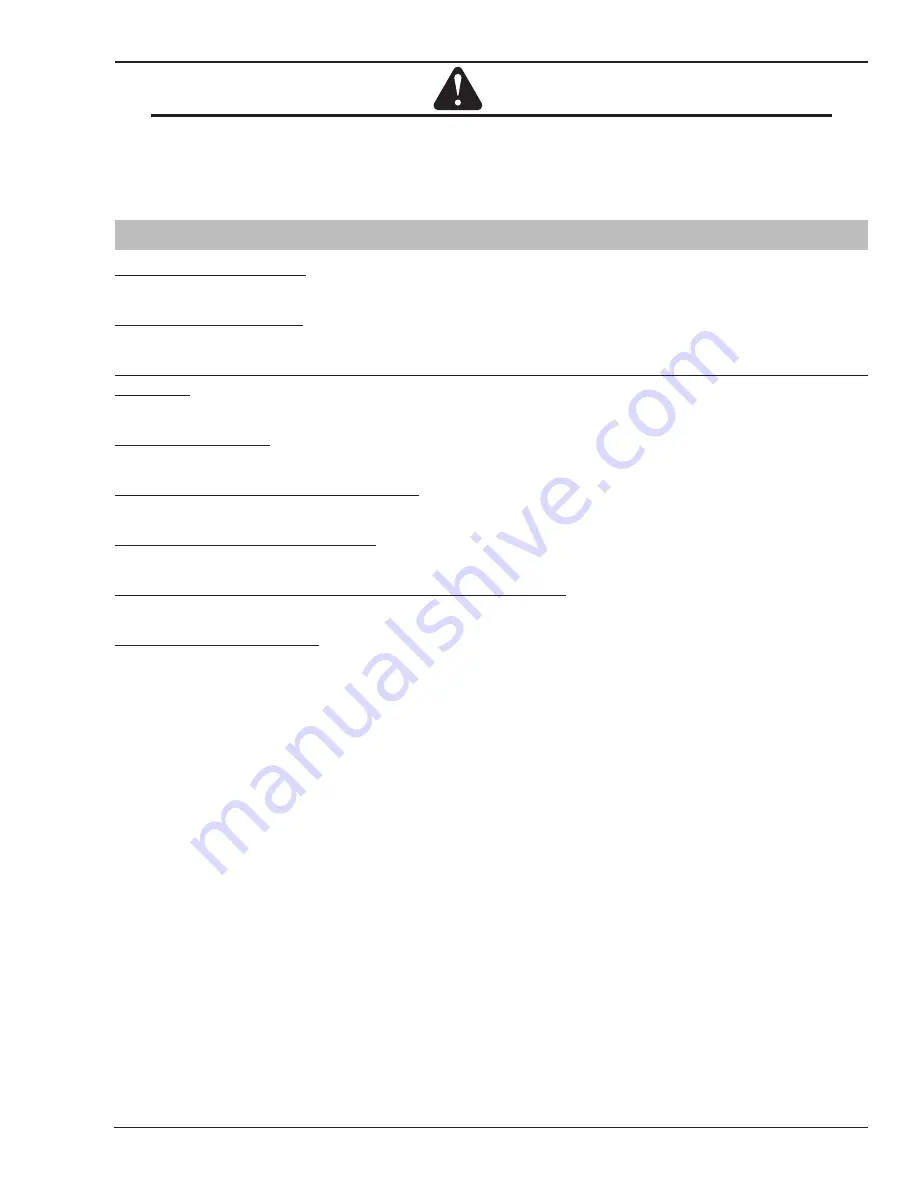
SAFETY INSTRUCTIONS
FIREPOWER 160S
Manual 0-5369
1-7
Safety Instructions
CAUTION
Open the cylinder valve slightly. If you open the valve too much, the cylinder could tip over. When cracking
the cylinder valve, DO NOT stand directly in front of the cylinder valve. Always perform cracking in a well
ventilated area. If an acetylene cylinder sprays a mist when cracked, let it stand for 15 minutes. Then, try
to crack the cylinder valve again. If this problem persists, contact your gas supplier.
1.03 Principal Safety Standards
Safety in Welding and Cutting, ANSI Standard Z49.1, from American Welding Society, 550 N.W. LeJeune Rd., Miami,
FL 33126.
Safety and Health Standards, OSHA 29 CFR 1910, from Superintendent of Documents, U.S. Government Printing
Office, Washington, D.C. 20402.
Recommended Safe Practices for the Preparation for Welding and Cutting of Containers That Have Held Hazardous
Substances, American Welding Society Standard AWS F4.1, from American Welding Society, 550 N.W. LeJeune Rd.,
Miami, FL 33126.
National Electrical Code, NFPA Standard 70, from National Fire Protection Association, Batterymarch Park, Quincy,
MA 02269.
Safe Handling of Compressed Gases in Cylinders, CGA Pamphlet P-1, from Compressed Gas Association, 1235 Jefferson
Davis Highway, Suite 501, Arlington, VA 22202.
Code for Safety in Welding and Cutting, CSA Standard W117.2, from Canadian Standards Association, Standards
Sales, 178 Rexdale Boulevard, Rexdale, Ontario, Canada M9W 1R3.
Safe Practices for Occupation and Educational Eye and Face Protection, ANSI Standard Z87.1, from American National
Standards Institute, 1430 Broadway, New York, NY 10018.
Cutting and Welding Processes, NFPA Standard 51B, from National Fire Protection Association, Batterymarch Park,
Quincy, MA 02269.

